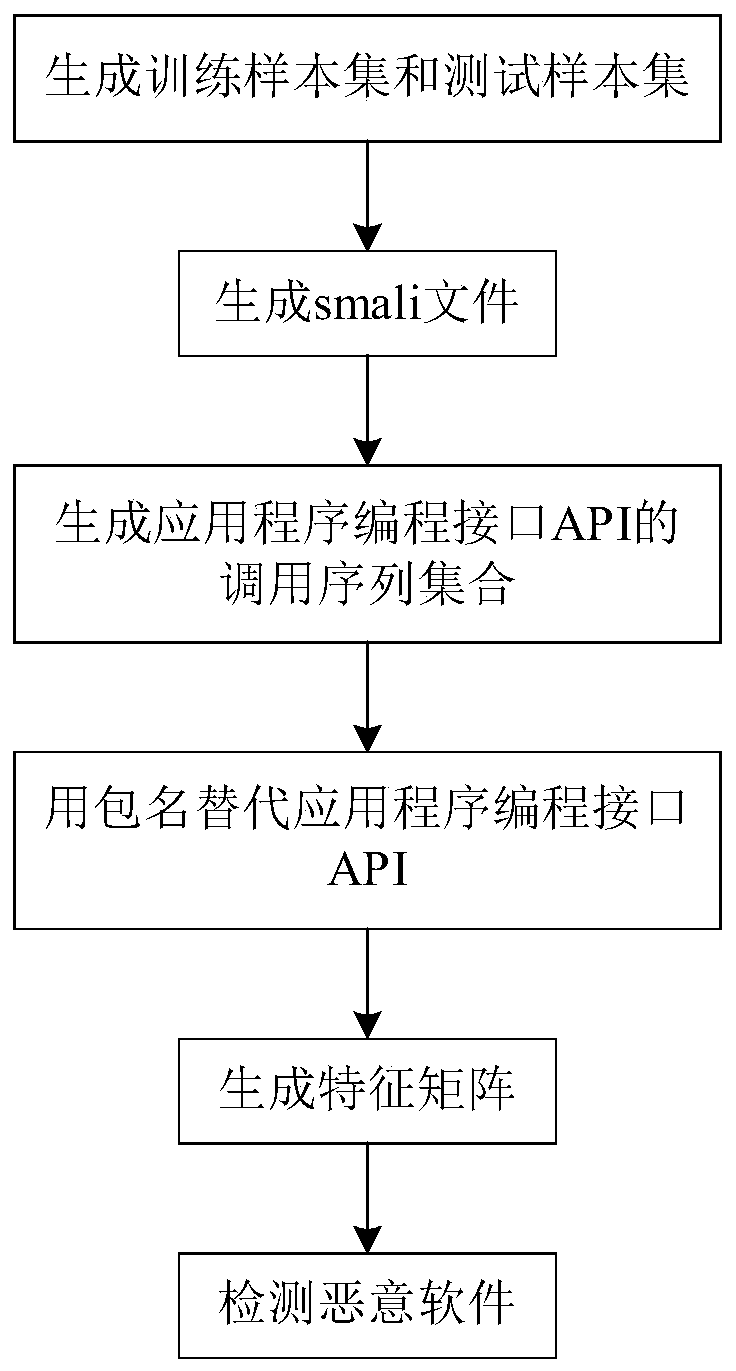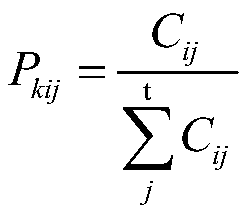An Android malicious software detection method based on an API calling sequence
A technology of API calls and call sequences, which is applied in the field of Android malware detection based on application programming interface API call sequences, can solve problems such as code confusion, low recognition rate, and omissions, and achieve improved detection efficiency and low computational complexity , reducing the effect of species
- Summary
- Abstract
- Description
- Claims
- Application Information
AI Technical Summary
Problems solved by technology
Method used
Image
Examples
Embodiment Construction
[0040] Attached below figure 1 The specific steps of the invention are described as follows.
[0041] Step 1, generate training sample set and test sample set.
[0042] 1600 known Android malicious applications and 2400 known normal Android applications are extracted from the application software library to form a training sample set.
[0043] 700 Android applications to be tested are used to form a test sample set.
[0044] Step 2, generate the smali file.
[0045] Use the Android decompilation tool to decompile each Android application software in the training sample set to obtain the smali file corresponding to each Android application software.
[0046] Step 3, generating a set of calling sequences of the application programming interface API.
[0047] The depth-first traversal algorithm DFS is used to generate a call sequence composed of all application programming interface APIs in each smali file.
[0048] The specific steps of the depth-first traversal algorithm D...
PUM
 Login to View More
Login to View More Abstract
Description
Claims
Application Information
 Login to View More
Login to View More - R&D
- Intellectual Property
- Life Sciences
- Materials
- Tech Scout
- Unparalleled Data Quality
- Higher Quality Content
- 60% Fewer Hallucinations
Browse by: Latest US Patents, China's latest patents, Technical Efficacy Thesaurus, Application Domain, Technology Topic, Popular Technical Reports.
© 2025 PatSnap. All rights reserved.Legal|Privacy policy|Modern Slavery Act Transparency Statement|Sitemap|About US| Contact US: help@patsnap.com



